TriMet just rolled out its second round of transit changes of the year, with southwest Portland as the focus. In particular, big changes came to the routes serving Portland’s largest employer, Oregon Health & Sciences University, on Marquam Hill. And since TriMet also made significant changes to my favorite bus line, I took it for a ride and figured you might want to come along.
But first, a quick refresh…
BikePortland covered TriMet’s planned overhaul of Marquam Hill service last January. The plan discontinued five express lines originating across the region that mainly served administrative and office workers commuting during the standard rush-hour. Many of those employees now work from home and those buses were running close to empty. In place of that network design, this week’s changes accommodate the many hospital and university employees who do not work typical office hours—not even to mention patients, who come and go all day.
The redesign has the Hillsdale neighborhood functioning as a transfer station between buses heading, alternately, to downtown or Marquam Hill. Some riders will have to transfer buses, but the new network achieves all-day service.
These changes were part of TriMet’s Forward Together project, which was developed in collaboration with Jarret Walker + Associates, a Portland-based transit consulting company with national and international clients. Jarret Walker posted on his blog this week “a little deep dive into how bus network designers think,” in which he goes through the reasoning behind the redesigned southwest network. You might not agree with it all, but no matter how you slice it, southwest Portland has been seen.
Now for the fun part. I really like buses. My bus route, the 51, is one of the least important in the city, but because it brings all those Lincoln students to high school TriMet can’t completely drop it. Over the years, however, they’ve managed to cut it back to really limited rush-hour only service.
The problem, as Tom Mills (TriMet’s Director of Planning and Policy) once told me, “is that your bus doesn’t go anywhere.”
Until this week!
Forward Together gave my line an outbound destination, and what a destination it is—The Fred Meyer grocery store on Barbur Blvd. (Previously, the 51 just ran from downtown up the hill, and back down.) So in celebration of Forward Together, and to check out the Rose Lane and transfer location in Hillsdale, I decided to do a little early morning grocery shopping. You want to come along?
I caught the 6:48 at the corner of Vista and Broadway. The bus was clean, on-time and had a very friendly driver. Upon entering, I immediately noticed a funny screen—and I was on it. Apparently, screwballs are less likely to attack a driver if they seem themselves on TV.
The screen also shows that I was the only person on the bus. And unfortunately, it stayed that way all the way to Barbur. But it was still exciting, this 51 was going where no 51 had gone before.
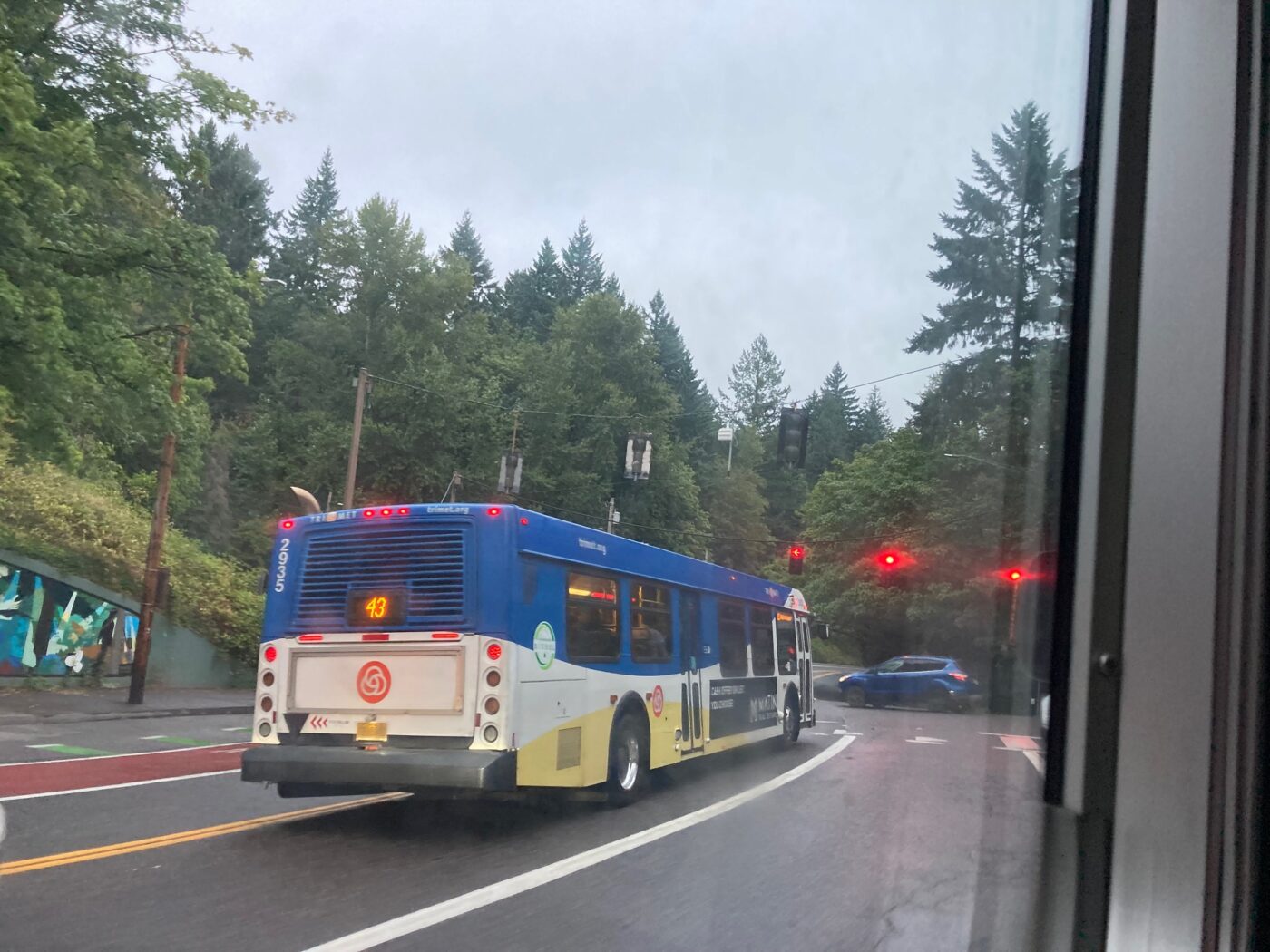
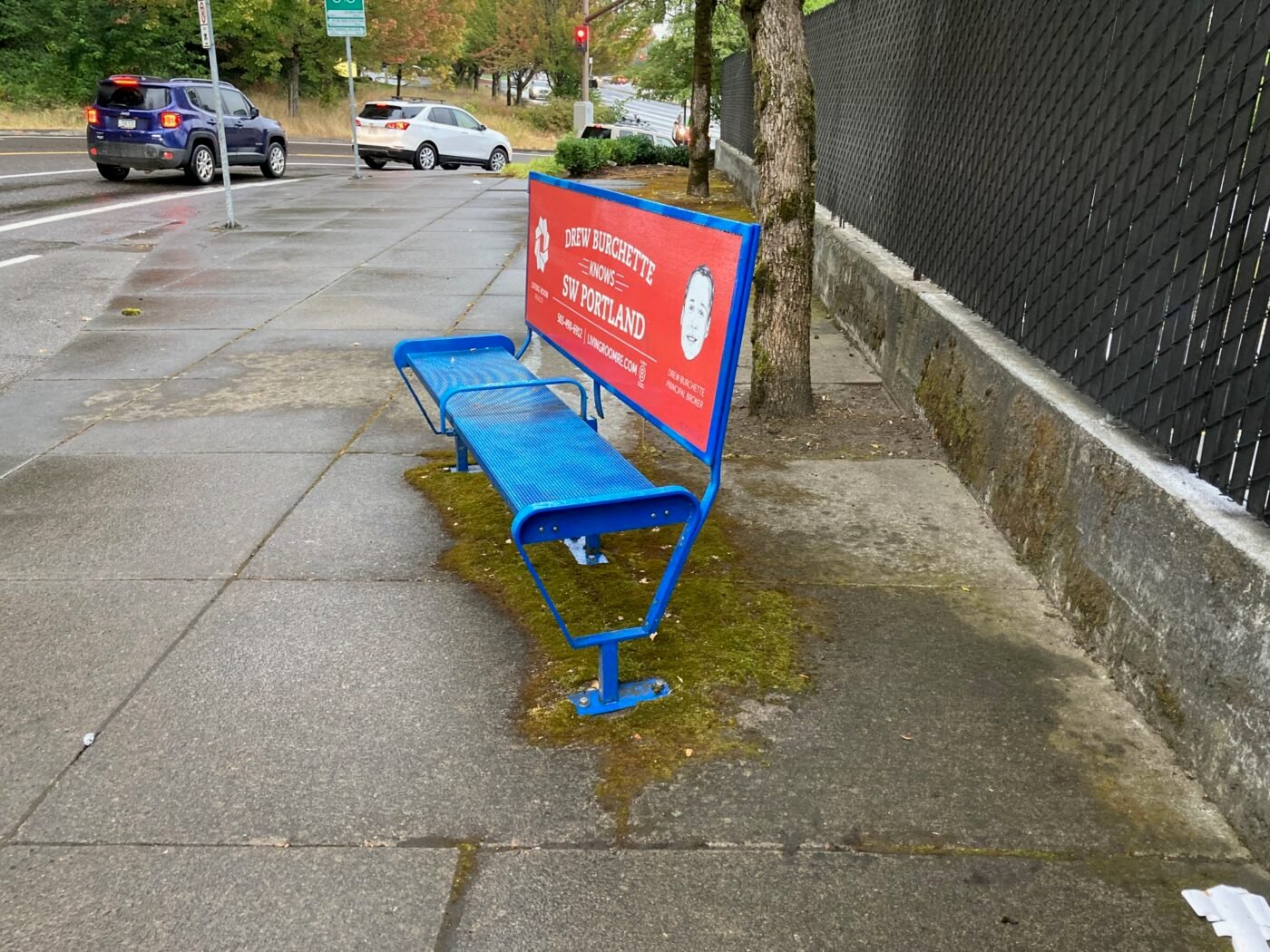
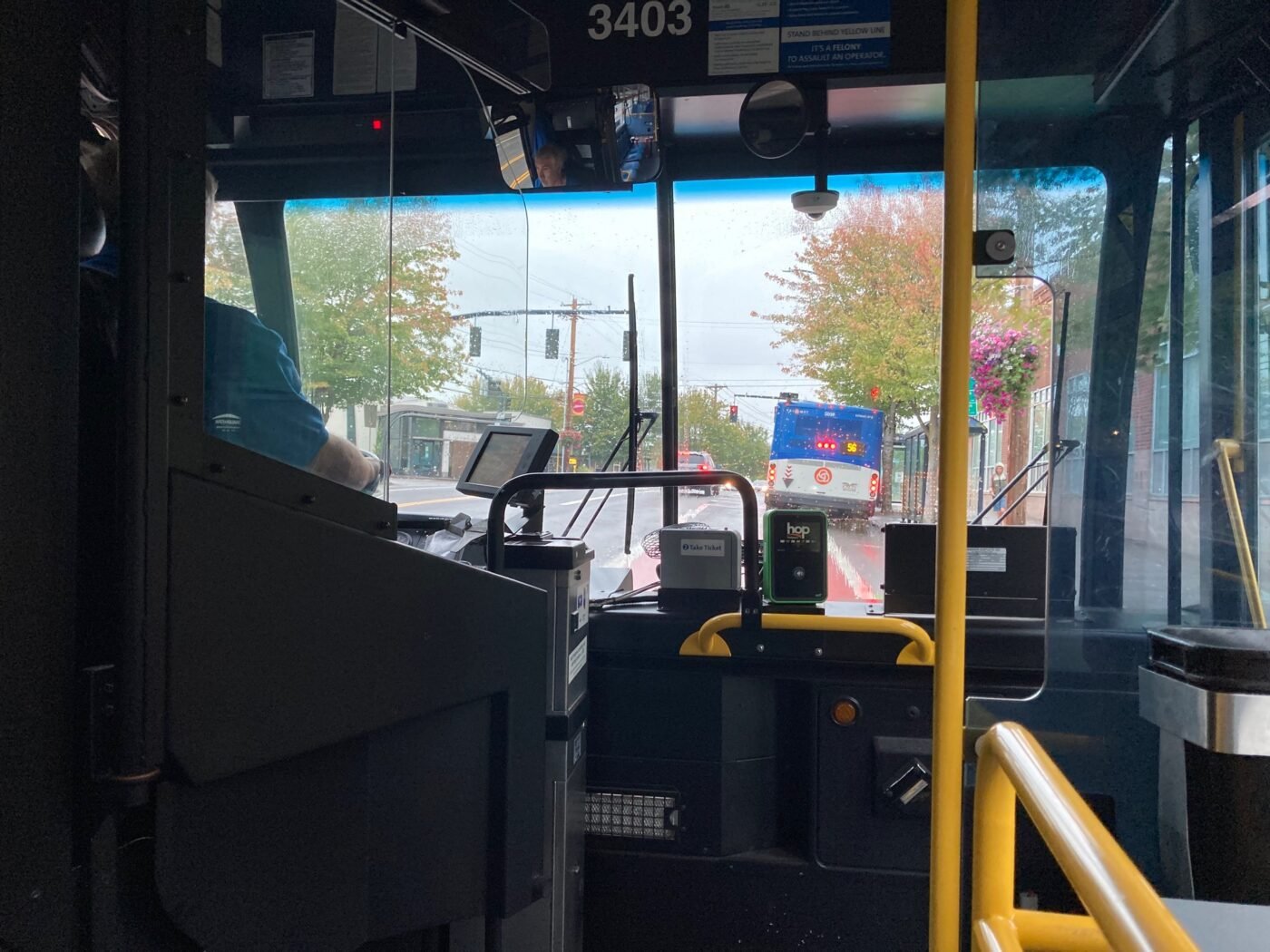
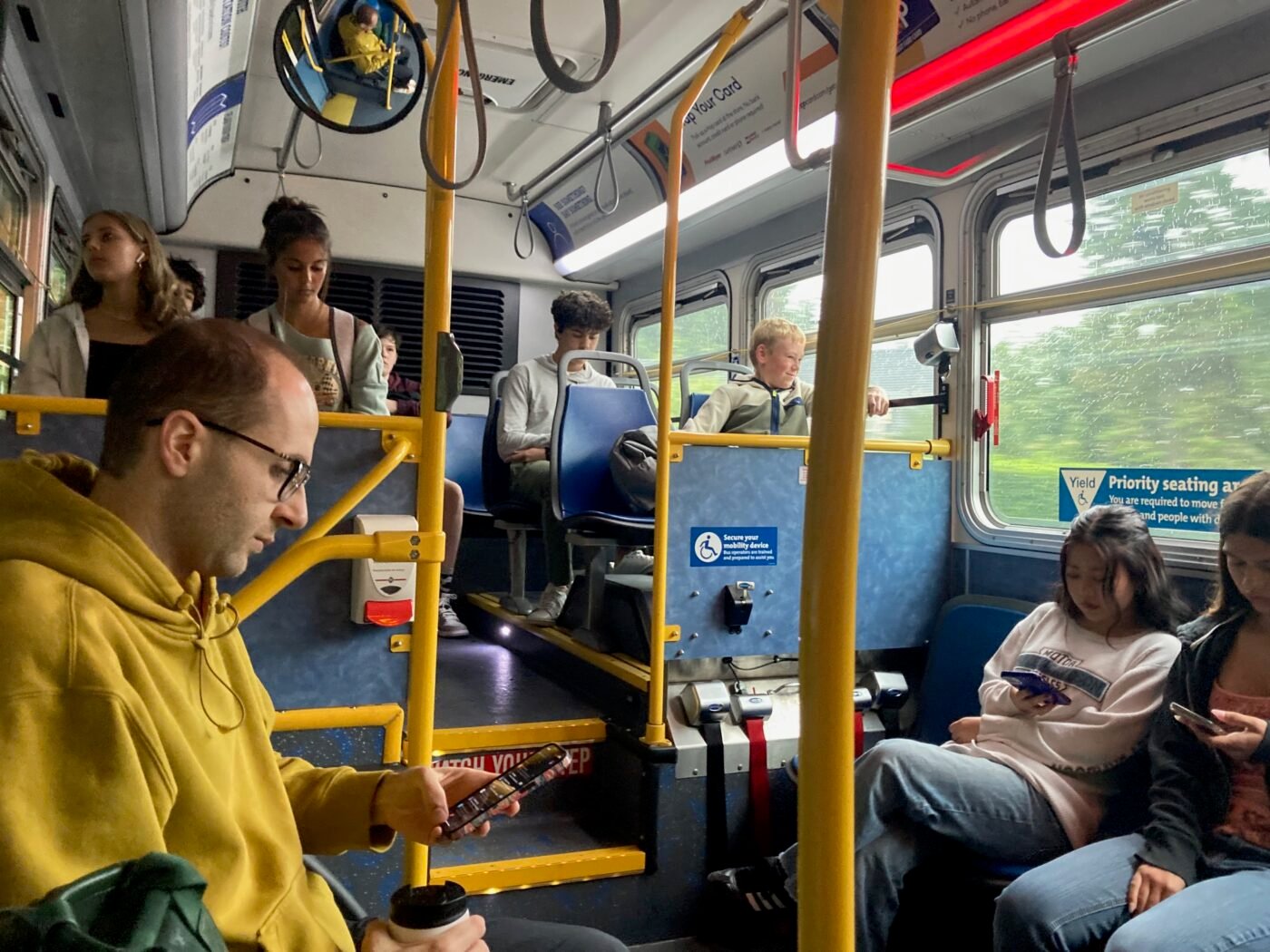
My 51, and the 43 in front, have just left the bus transfer stop in front of Ida B. Wells High School. The 43 will head up to Marquam Hill, and the 51 will make a right on Terwilliger.
I made it to Fred Meyer, did some shopping, and happily there was a wet bench for me to sit on while I waited for my bus back home.
I rode on the Capitol Hwy Rose Lane approaching Sunset Blvd, and soon my bus began to fill with Lincoln students.
Did you take the bus this week?
I plan to get back in the habit. The 51 is a modest little route, but the strategic jiggling TriMet has done in my local service area has piqued my interest. This is the first time I’ve been able to take a bus to a grocery store. Who knows what I’ll figure out next?




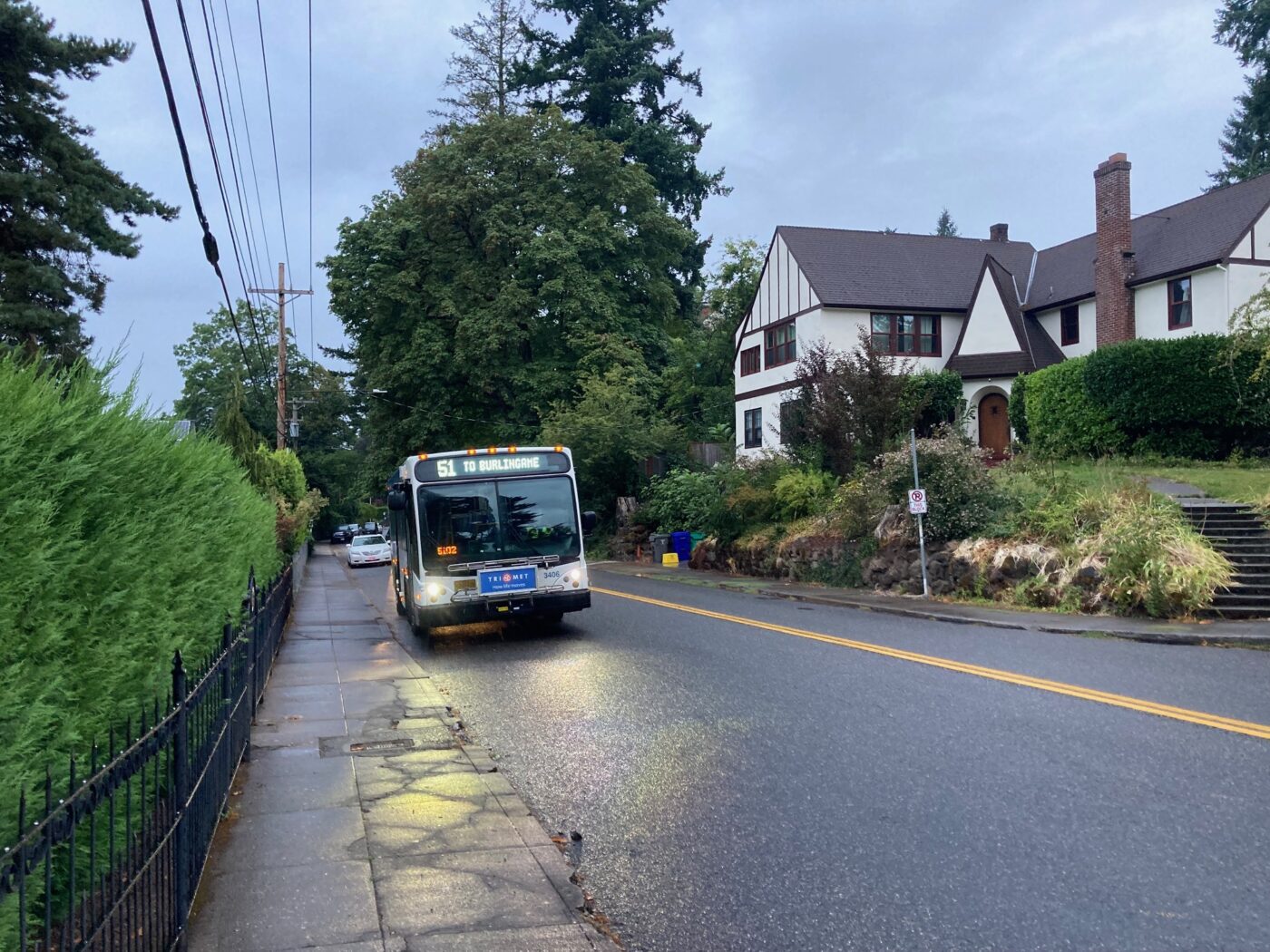
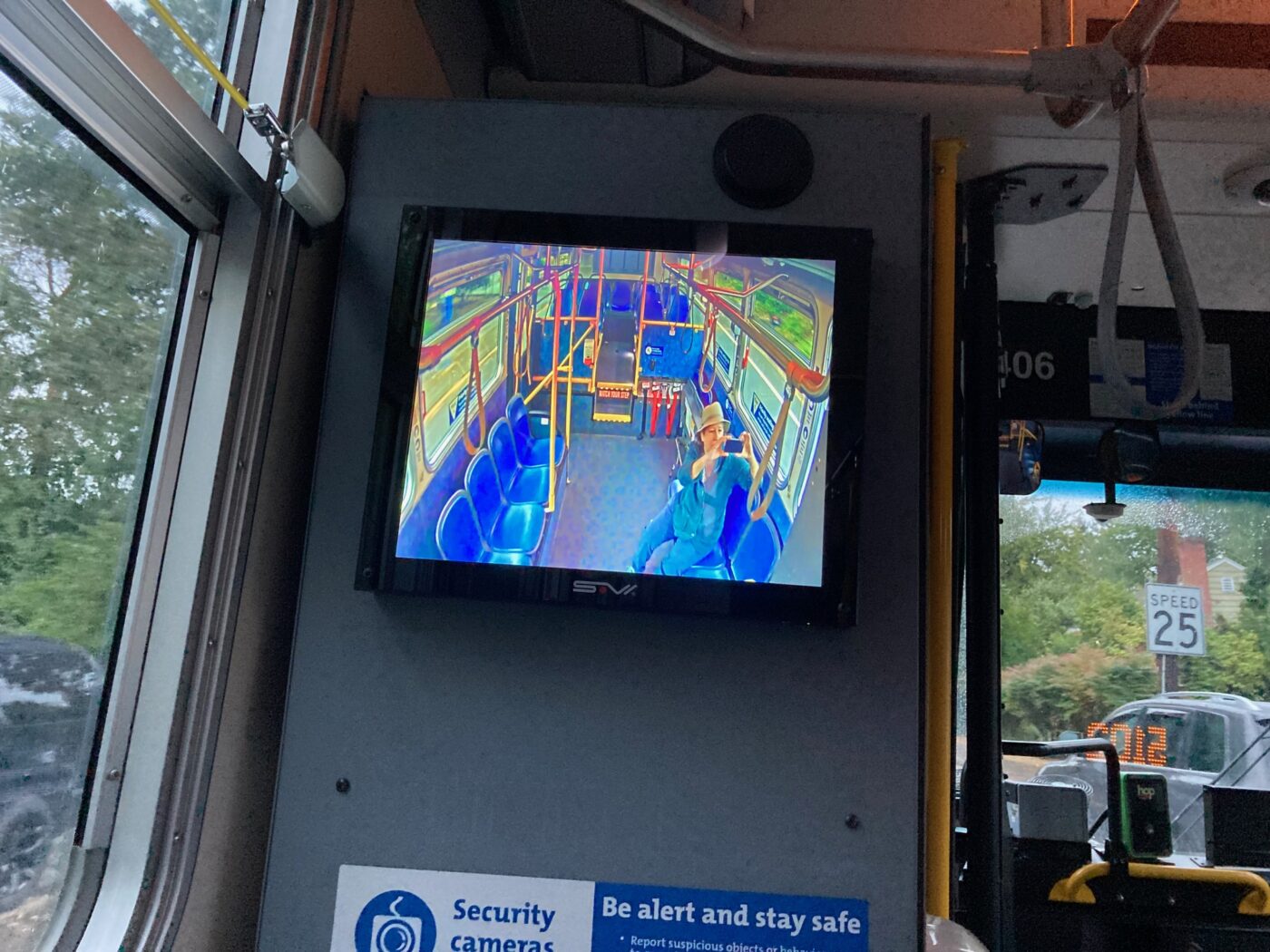
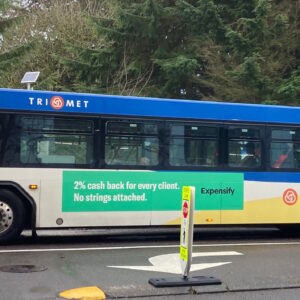

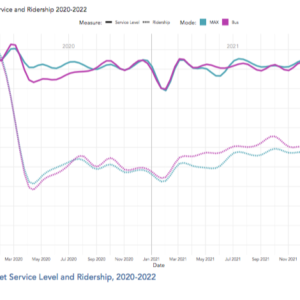

Thanks for reading.
BikePortland has served this community with independent community journalism since 2005. We rely on subscriptions from readers like you to survive. Your financial support is vital in keeping this valuable resource alive and well.
Please subscribe today to strengthen and expand our work.
I bike downtown to work most days but when I have business in SW I typically take a bus. I took the new route 35 through Terwilliger (from John’s Landing to Lake Oswego it alternates between Terwilliger Parkway and Macadam Ave) today to get from downtown to Lake Oswego. I thought it would be slower, but it was about the same time as Hwy 43. It will be interesting to see how used the new route is to Lewis and Clark, which has struggled to have regular bus service. Most seats were filled and a few people got off at the Lewis and Clark stop. I also rode the new frequent service line 54 yesterday and caught a line 45 back to downtown. Service to Hillsdale has always been pretty good for me though. Hopefully this Forward Together project is successful.
Unfortunately, these changes are not working for everyone. TRIMET rerouted Bus 94, and eliminated it’s downtown section. Because of this, Bus 12 is full, standing room only during the morning and afternoon rush hour.
The Southwest corridor should have a metro line anyways
Nah – the Sightline people characterized the SW MAX as a “line to nowhere” and fought it bitterly, And guess what? It failed at the ballot box.
Feels like SW needs more representation in Sightline. I felt so betrayed when they voted no. And now we are blocked in the SW from making meaningful progress because all the good stuff got wrapped up in one gigantic project. As an advocate I am so sick of hearing “oh yeah that was a part of the SW Corridor package and will eventually happen”. Can we break out smaller stuff like a car free crossing across 217 in Tigard? Please? I know there is the 95th street crossing in the works, but that is still early stages of planning and the other crossings was just needing funding.
BRT makes more sense for the SW corridor.
No
Hopefully you won’t be the only one on the bus in the future because driving a big bus for a small number of riders is expensive and polluting.
How about finding middle ground by adding few extra buses during rush hour?
….How about we build more densely in an area this close to downtown instead of letting scarcity accrue benefits for the wealthy SFH owners in this area? Given the topography of the area, building more here isn’t the simplest thing, but as per usual, Portlanders seem to be thinking small and receiving improvements in proportion to that.
Count on Watts to find the down side of any climate-change solution!
It’s only a solution if it reduces emissions. And at its current levels of use, we’d emit less if everyone drove. That’s not what I want of course, but the way TriMet is operating is not making things better.
How about reduce car speeds and capacity in the areas so the bus line is actually competitive? Slower car speeds and less cars mean safety improvements, emissions improvements, and actual transit choice. Most people have to choose the fastest option, and the no traffic best trip time for cars is what public transit always has to compete with. When more people use public transit, it’ll get more funding and improve. But as long as it sits the same traffic as cars it is not a choice, people will chose cars every single time unless they can’t drive. You are advocating for no public transit option, which I never see having a good ending.
Oh that’s right, some bs technology is going to save us all. EVs, self driving cars, NFTs, or whatever other unproven mumbo jumbo that has zero track record. As long as we don’t have to change the transportation status quo. /s
I believe that degrading car travel with the express purpose of making transit look good in comparison, as you are proposing, is a political non-starter, and is thus not a useful idea.*
I am NOT advocating for no transit (or even reduced transit). Absolutely not.
What I AM advocating for is much lower carbon emissions, hardly status quo. If transit can help us get there, I’m all in. That said, I see no path forward where Portland transit improves enough that it will replace driving for a critical mass of people in any meaningful timeframe. But it would be great if someone could figure out how to make it work. If you have the solution, please share it with TriMet.
You may think that EVs are “unproven mumbo jumbo”, but they’re here, and are necessary (though not sufficient) for reducing our carbon output in the short- to medium-term. Self driving cars will (or will not) appear of their own accord, and I’m not advocating for (or against) them. NFTs are for chumps.
*That said, I totally support Portland’s safety-drive moves towards lower speed limits, though they probably won’t go much lower (though I could possibly see some arterials dropping to 25).
Red herring. “if everyone drove” is not a solution based in reality, because tens of millions of Americans can not drive due to age, disability, and/or income.
There are lots of reasons to support transit; the comment I was responding to was focused on climate change, an issue where, at the moment, TriMet is probably hurting more than it helps. The comparison with driving will probably get worse before it gets better as private vehicles electrify and TriMet clings to diesel.
Trimet has a small fleet of battery electric busses, which constitute roughly 1.5% of their fleet. Oregon has roughly 70,000 battery electric vehicles registered, out of over 4.1 million registered private vehicles, yielding nearly the exact same percentage.
You don’t seem to know what you are talking about here, but are instead trying to push some kind of narrative that isn’t supported by the facts.
I see no evidence that Trimet is “clinging to diesel” no more than the general population are clinging to fossil fuels. Transit systems are complex and it takes time to introduce new vehicle types. If they launched a full fleet of electric busses and had operational meltdowns due to the technology not being ready, I’m sure you would be on here complaining about that instead.
https://trimet.org/bettertransit/greenbusfleet.htm#electric
https://goelectric.oregon.gov/ev-future
https://www.oregon.gov/odot/dmv/pages/news/factsstats.aspx
As someone once called the “least informed person on BikePortland”, surely you know I never know what I’m talking about.
TriMet has pledged to be electrified by 2040, which I consider far too passive. TriMet is a public agency, and thus I feel it has more of an obligation to consider the public interest and move quickly compared to some private trucking company.
As a point of comparison, 32% of San Francisco’s bus fleet is electrified (as of 2021, may be higher now). Of course it’s important to get it right, but TriMet has shown approximately zero urgency on this matter.
Please show me some facts to help me see where I’m wrong.
Data from FTA, linked here: https://www.govtech.com/biz/data/how-many-electric-buses-does-your-city-have-2022-edition
San Francisco (and Seattle), due to their hilly terrain, have a well-developed legacy system of trolley busses, leading to significantly higher levels of electrification. Please pick a different large city to compare with.
I was just in Anaheim last week, riding their BYD electric busses. It was an impressive system, but the bus was just carting us a few miles between Disneyland and the hotel/parking area. I’m not aware of any major city, running city-wide all day service that has the level of BEV bus service you seem to expect in 2023.
Note that Proterra just went out of business last month. Just one more barrier for transit agencies looking to electrify. At least the ones who don’t have the benefit of having miles of existing trolley wire.
https://www.washingtonpost.com/transportation/2023/08/12/proterra-bankruptcy-electric-buses/
“Please pick a different large city to compare with.”
There are plenty to choose from. Reno, Wichita, Dayton… The list is long before you come to Portland. And some of the smaller cities are pretty impressive. Even if their percentages are high because they have a small number of buses to start with, the fact that many tiny jurisdictions are able to deploy more electric buses than a place like Portland tells you something about our big-city can-do attitude.
I don’t expect TriMet to have electrified a significant part of their fleet by 2023, but they really are making a pitiful effort with a full deployment date still a full 17 years in the future.
That’s not just a “narrative”. It’s pathetic.
Trimet could do a lot more to reduce emissions if they adopted CNG. But they more concerned about looking bad in the eyes of activists. So they opt for really HEAVY electric buses and put those “zero-emission” stickers on them, when in fact the emissions are upstream at coal-fired electricity plants in Idaho. It’s ridiculous, but Portland is all about performance.
No, it’s not: “In every year since 2007, Oregonians used less electricity than the state’s power plants generated and the excess power went to other states by way of the Western Interconnection” (https://www.eia.gov/state/analysis.php?sid=OR). On that same page, you’ll see that coal plays no role in OR’s generation, and methane is 30%. I.e., 70% of the state’s grid is emissions-free.
The problem of providing emissions-free bus services is the problem of transit and land use in the Metro, generally: too much sprawl. The best services–what make Seattle and SF more successful–have a strong-enough core region that can use overhead wiring for trolley buses, and IMC buses for branches off of lines to that core.
Honestly, the lack of push for greater centralization in downtown and around MAX stations (and lack of push for a city-center MAX tunnel), both on this site and in the region generally, continues to mind-boggle me.
The generation data you cited is incredibly misleading because much of that generation is owned (exported) by out of state power companies and Oregon utilites import quite a bit of its energy from dirty fossil fuel plants — including coal plants.
For example, Pacific Source which provides power to a decent chunk of Portland gets the vast majority of its energy from coal and natural gas:
Your constant promotion of toxic fracked methane on this blog makes me wonder whether you have some link to the fossil fuel industry.
Methane
CNGis a greenhouse gas with 34x the global heating potential of CO2 and its industrial production should be rapidly phased out. We should also greatly reduce CH4 emissions associated with agriculture, land use, and waste treatment because biological sources play a larger role in the rapid increase in atmospheric CH4:Do they have any plans to start cleaning the passenger compartment of the buses and trains?
I do wish that the statement that most of the riders of the Marquam Hill busses were office workers who can work remotely was not repeated so often. That definitwly doesn’t describe the 15-20 folks I rode with daily just after 6 AM. These were clinical workers and clinical students, or they wouldnt have been on the bus that early. The express busses also had greater frequency during those critical hours for clinical folks than the replacements do. The new routes are better for getting everyone there, and better for getting rhere later in the day, but lets not pretend that rhey don’t represent an increase in the length of those early cliniical commutes (either because of slower travel or required transfers). As I bike to the bus, its still doable, but my new starting point also requires me to bike to the perpetual construction zone that is Scholls Ferry Rd and that is not particularly safe.
I hope the Trimet consultants talked to you before they made their changes.
I find that a lot of city, Metro, Trimet, etc consultants don’t talk with a broad cross-section of the public. They tend to talk to the activists whose voices then drive the project. It’s how we got the SW Capitol Hwy sidewalks that are doubling as bike lanes, I guess.
Where can I sign up to be an activist that has my voice heard?
Good one, Daniel. Thanks for the laugh. 🙂
Once you’re vetted by an appropriate non-profit, you’ll get your card in the mail.
Hi Al,
Thank you for commenting. I probably could have written those summary paragraphs a little more sensitively, I apologize for over-simplifying.
I got interested in transportation because I was so irked that my 51 service kept getting cut — I think parking fights and bus problems have got to be some of the the most hot-button issues. So I get the irritation.
But I want to talk a little about data, partly in response to Fred above. I usually roll my eyes when someone mentions data-driven solutions, what a misused buzz-word. However, If anyone is in a good position to make decisions based on data, it’s going to be a transit agency.
Think of the amount of information they have on each of their lines. But the Forward Together project went beyond the bus ridership stats, here’s a link to a story I wrote about the data gathering and analyses that went into the redesign, it’s impressive: https://bikeportland.org/2022/10/06/moving-forward-into-the-forest-with-trimets-new-service-concept-364900
Jarret Walker writes about why those design decisions were made in his blog post. And TriMet will probably adjust service as needed, nice thing about buses is that they aren’t set in stone.
Even after reading the blog post and the concept analysis, I disagree with the removal of the 51 service to downtown. I’m sure i’m biased, since I used it, but with such close proximity to downtown it is fairly unbelievable to have no transit access. The ridership of 51 was low, but it wasn’t the lowest, and that’s even with incredibly limited service over an hour apart, none in the middle of the day, none after 630, and none on weekends. If you make something unusable, most people aren’t going to use it. TriMet knows that. It was also hasty to base such a large overhaul on data that was still heavily impacted by the pandemic. Pandemic impacts will no doubt be felt for a long time, but it was much too early on to be analyzing for something like this.
I empathize with you Morgan, I’ve been riding the 51 since 2001. Cuts began in 2007. By 2018 I had resigned myself to the reality that TriMet was never going to restore service.
All of this was pre-covid. I agree with your observations, especially about killing a line. But I see the “Forward Together” reroute as the first positive sign in 22 years. At least someone has turned attention to it and thought about it. And they do have a stack of data justifying their redesigns.
I lived at SW Elizabeth St and SW 18th Ave in the 60s and 70s. The 51 bus was a part of my childhood. Back in the day it ran daily from early morning until evening.
I think you are required by Portland statute to refer to people who attack bus drivers as neighbors experiencing mental-health episodes. 😉
I’m particularly super stoked about the improved frequency and extended hours for the 35 as part of the latest round of service changes. Much quicker for getting downtown from Kenton than the 4 for me.
Same here. I very occasionally use the 35 to get to SW Portland, and I was shocked when I looked up the weekend frequencies a few months ago. It was basically useless and I opted to walk 4 miles instead.
All OHSU employees AND patients are furious with these changes. Many of our patients are blind and rely on transit to get up Marquam Hill. We are all now rerouted to the waterfront where we walk and stand in lines for 20-30 minutes just to get packed into the tram like human sausages. I think this was a huge mistake and disservice to all employees and patients who rely on transit.
Wow – yet another group (OHSU employees and patients) that wasn’t consulted when the plans were made.
Lisa, what does Jarret Walker say about consultation with these important stakeholders?
Read him yourself Fred!
I agree, this stuff all bugs me about the changes even though I’m totally capable of the waiting and walking. Trimet acts like the express lines are redundant since other busses will drop you off somewhere near the tram. Getting off a bus, walking over to the tram in whatever weather you’d rather not be out in, then waiting to cram into that stuffy respiratory illness incubator in the sky is far from the same experience of being taken up the hill on the bus you were already on and offered several stops that are likely closer to your destination.
Unfortunately, I used to take the 51 downtown to work on days I didn’t feel up to biking. Now, i’d have to drive, which i’m quite uninterested in. Making it even worse, is the protected bike lane that I use to get home is being eyed for removal by Mapps & the PBOT director.